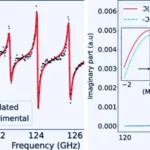Key Points
- Machine learning was developed to detect satellite streaks in telescope images.
- Thousands of low-Earth orbit satellites are disrupting astronomical observations globally.
- AI achieved 96% accuracy in identifying satellite streaks but struggles to remove them from bright images fully.
- Open-source tools for cleaning up contaminated images are expected by next year.
Astronomers have developed a machine-learning algorithm to detect satellite streaks in night sky images with high accuracy, offering a potential solution to the increasing interference caused by communication satellites. While the new technology won’t completely eliminate the issue of satellites disrupting astronomical observations, it can significantly help mitigate the problem by identifying and potentially removing streaks from telescope images.
Presented at the International Astronomical Union (IAU) General Assembly in Cape Town, the project uses artificial intelligence (AI) to classify satellite trails in astronomical data. “With enough data, AI can recognize satellite streaks,” says Siegfried Eggl, an astrophysicist at the University of Illinois Urbana-Champaign. However, the rapid launch of communication satellites has outpaced the development of countermeasures, making it challenging for researchers to address the problem fully.
In the last five years, companies like SpaceX, Eutelsat OneWeb, and Amazon’s Project Kuiper have launched thousands of low-Earth orbit satellites. These satellites, essential for global internet coverage, have become a significant obstacle for astronomers. Richard Green, director of the IAU’s Centre for the Protection of the Dark and Quiet Sky from Satellite Constellation Interference, warns that “approximately a million satellites in the registry of ambitions for the future.”
These satellites appear as bright streaks in images, interfering with observations across the electromagnetic spectrum. Sensitive telescopes, such as the upcoming Vera Rubin telescope, are particularly vulnerable, with more than a third of its images estimated to be affected.
María Romero-Colmenares, a data scientist at the University of Atacama in Chile, trained a machine-learning algorithm to identify satellite trails in telescope images. The model was trained on tens of thousands of images from multiple international telescopes and achieved a 96% accuracy rate in detecting satellite streaks.
While this development marks a significant step forward, removing satellite trails from images remains challenging, especially when streaks are too bright and bleed into surrounding pixels. The next goal is to create an open-source app and program by the end of next year that will allow observatories and amateur astronomers to identify and clean up satellite-contaminated images.
In addition to streaks, satellite flashes caused by reflected sunlight and unintended radiation emitted by satellites present further obstacles to astronomers, interfering with observations and data related to the cosmic microwave background. As more satellites are launched, these problems will become increasingly difficult to manage, with AI offering limited ability to restore lost data.










